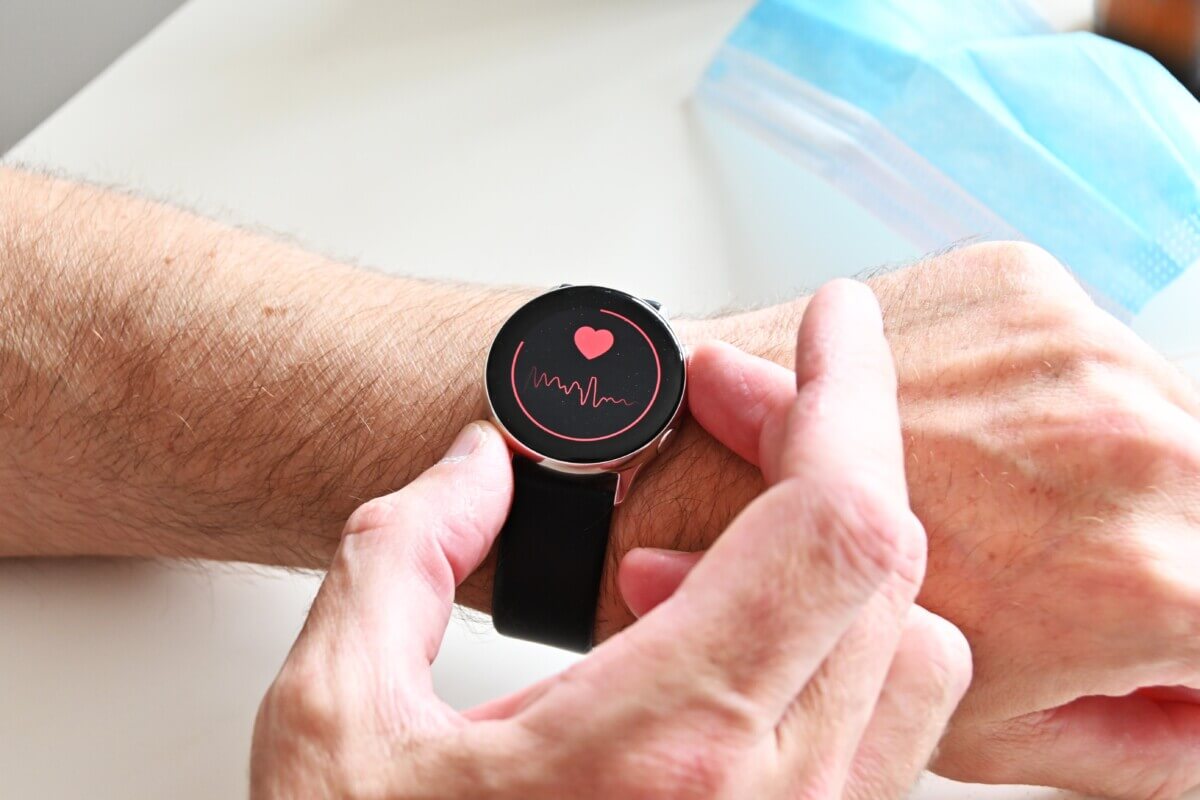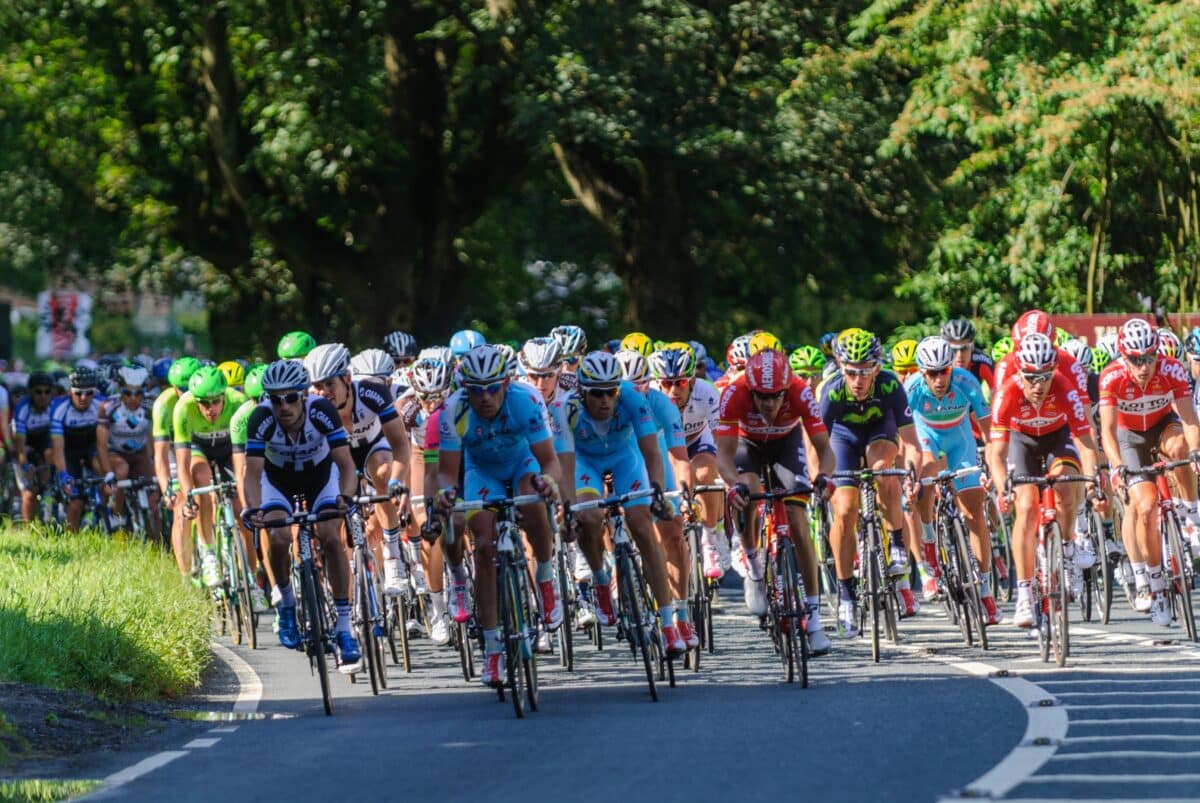
An athlete’s heart is monitored while he runs on a treadmill. (Photo by Gorodenkoff on Shutterstock)
Researchers believe smartwatches should be able to provide ‘heartbeat consumption’ data to consumers.
In A Nutshell
Researchers tested a new metric: counting daily heartbeats like calories.
Athletes saved ~11,500 beats daily thanks to lower resting heart rates.
Tour de France cyclists averaged ~35,000 beats per race stage.
The concept is promising but still exploratory and not ready for health apps yet.
MELBOURNE — Australian researchers are proposing a deceptively simple health metric that could change how athletes and everyday exercisers monitor their training: counting heartbeats like calories.
The concept, called “heartbeat consumption,” treats each beat of your heart as a limited resource that gets spent throughout the day, borrowing from the old idea that we only have so many heartbeats in a lifetime, though the science behind longevity is more complex. Just as fitness apps track steps or calories burned, this metric adds up every heartbeat during rest, exercise, and everything in between to create a daily total. For researchers studying elite cyclists, the numbers revealed something unexpected about extreme endurance training.
Scientists from St. Vincent’s Institute of Medical Research in Melbourne examined heart rate data from 109 young athletes and 38 healthy controls who wore monitoring devices for 24 hours in an exploratory study. Athletes averaged 11,520 fewer heartbeats per day than non-athletes, a 10.6% reduction driven primarily by their lower resting heart rates.
But when the research team analyzed publicly available heart rate data from 57 professional cyclists racing in the 2023 Tour de France and Tour de France Femmes, a different picture emerged. These elite riders accumulated an average of 35,177 heartbeats during each stage of the race. After factoring in their resting heart rates for the remainder of the day, professional cyclists racing at this intensity appeared to consume far more total heartbeats than recreational athletes or sedentary people.
 Scientists say your heartbeat consumption is especially important to know if you’re an athlete or physically active. (Photo by Nik on Unsplash)
Scientists say your heartbeat consumption is especially important to know if you’re an athlete or physically active. (Photo by Nik on Unsplash)
Why Heartbeat Consumption Is Vital Knowledge For Athletes
The heartbeat consumption model offers something current fitness metrics don’t: a single number that captures both the benefits of exercise-induced slow resting heart rate and the costs of intense training sessions.
Current smartwatches already track resting heart rate, active heart rate, and heart rate variability. But these measurements exist in isolation. Heartbeat consumption would combine them into one cumulative daily figure, similar to how banking apps show total spending across multiple accounts.
For competitive athletes, this could be particularly valuable. Training plans typically measure workout intensity through heart rate zones, duration, and perceived exertion. But these metrics don’t account for the heart’s workload during the other 22 hours of the day. An athlete with a resting heart rate of 45 beats per minute accumulates about 64,800 beats during 24 hours of complete rest. Add a two-hour training session at 150 beats per minute, and the total climbs to 82,800 beats for the day.
The calculation itself is straightforward: multiply heart rate by time for each activity, then add up the totals. Modern wearable devices already collect this data continuously. The technology exists; what’s missing is the framework for interpreting the numbers.
“Considering the ubiquitous use of smartwatches enabling constant heart rate acquisition, this would seem to be a health metric worthy of further evaluation,” the researchers wrote in their paper, published in JACC: Advances.
Finding the Sweet Spot
The research hints at what exercise physiologists have long suspected but struggled to quantify: there’s an ideal zone for exercise benefits, and pushing beyond it may come with metabolic costs.
Athletes in the study showed clear evidence of cardiovascular adaptation. Their average 24-hour heart rate of 68 beats per minute compared favorably to the 76 beats per minute observed in controls. Most of this difference came from lower heart rates during inactive periods.
Tour de France data suggested limits to this efficiency. Professional cyclists pushed their average daily heartbeat totals well above what would be expected in recreational exercisers or sedentary individuals. While two hours of exercise represents only 8% of the day, the intensity during those two hours can outweigh some of the benefits from lower resting rates during the remaining 92%.
The study also revealed an unexpected finding about gender differences. Male and female Tour de France cyclists consumed nearly identical numbers of heartbeats per stage, despite racing different distances. Women covered shorter stages but maintained higher average heart rates, while men rode longer at lower intensities. The end result balanced out to roughly 35,000 heartbeats per stage for both groups. Researchers noted the study wasn’t large enough to formally test sex differences, so this finding remains preliminary.

The study showed comparable heartbeat consumption between men and women who participated in the Tour de France, despite racing different distances. (Photo by Jonathan Mills on Shutterstock)
When Will We See Heartbeat Consumption On Smartwatches?
Before heartbeat consumption can become a mainstream health metric, researchers need to establish reference ranges and validate its predictive value. What constitutes a healthy daily heartbeat budget? Does the number vary by age, fitness level, or cardiovascular health status?
The current study offers a starting point but acknowledges important limitations. The sample size was modest, with 147 total participants in the monitoring portion. Researchers didn’t adjust for confounding variables like age, fitness level, or heart rate recovery metrics. Tour de France analysis relied on publicly shared data from Strava rather than controlled measurements.
Still, the basic premise is consistent with established observations linking lower resting heart rates to reduced cardiovascular risk. Regular exercise typically lowers resting heart rate over time. The question is whether monitoring cumulative daily heartbeats adds meaningful information beyond what existing metrics already provide.
Given that millions of people already wear devices capable of tracking this data continuously, the barrier to testing the concept is remarkably low. Fitness apps could add heartbeat consumption as an experimental feature, allowing users and researchers to explore its utility in real-world conditions. Whether it proves useful as a training tool and overtraining signal or becomes just another number to obsess over remains to be seen.
Disclaimer: This article is for general information only and is not a substitute for professional medical advice
Paper Summary
Methodology
Researchers examined 24-hour heart rate monitoring data from 109 young athletes (median age 19 years, 69.6% male) and 38 healthy controls (median age 21 years, 68.4% male) participating in the Australian cohort of the Prospective Athletic Heart (Pro@Heart) study. Participants wore Holter monitors during normal daily activities, including exercise. The devices recorded heart rhythm, rate, and accelerometer-based activity estimates. Data quality was excellent, with less than 2% nondiagnostic data in both groups. To explore extreme exercise scenarios, researchers also analyzed publicly available Strava data from 22 male and 35 female professional cyclists during the 2023 Tour de France and Tour de France Femmes. Average heart rates during each stage (excluding time trials) were multiplied by exercise duration to calculate heartbeats consumed during racing.
Results
Athletes showed lower average 24-hour heart rates compared to controls (68 ± 11 vs 76 ± 8 beats per minute). This difference translated to 11,520 fewer heartbeats per day for athletes, a 10.6% reduction. The lower average was primarily attributable to reduced resting heart rates in athletes, with heart rates above 100 beats per minute representing only 7.6% of total time in athletes versus 9.4% in controls. Professional Tour de France cyclists consumed an average of 35,177 ± 6,024 heartbeats per stage, with no difference between male and female riders despite women completing shorter stages at higher heart rates (234 ± 39 minutes at 148 ± 9 beats per minute for females versus 273 ± 33 minutes at 127 ± 14 beats per minute for males). When combined with estimated non-exercise heart rates, professional cyclists during stage races appeared to exceed the heartbeat savings associated with resting bradycardia.
Limitations
The study acknowledges several important limitations. The sample size was modest with only 147 participants in the monitoring portion. The analysis did not adjust for confounding variables such as age, fitness level, or heart rate recovery metrics. Tour de France data came from publicly shared Strava recordings rather than controlled research measurements, and researchers could not verify accuracy or account for individual variations in fitness or training status. The study used different Holter monitoring devices between Australian and Belgian cohorts, limiting the full Pro@Heart dataset to only the Australian participants. Researchers emphasized their findings should be interpreted as exploratory and hypothesis-generating rather than conclusive. Sex-specific differences require further investigation, particularly given that the study lacked sufficient power for formal interaction testing between sex and athlete status.
Funding and Disclosures
Two researchers received Australian Government Research Training Program Scholarships. One researcher was supported by a Royal Australian College of Physicians Research Entry Scholarship, National Health and Medical Research Council Postgraduate Scholarship, and Heart Foundation PhD Scholarship. One author received support as a postdoctoral clinical researcher from the Fund for Scientific Research Flanders. The senior author receives support from a National Health and Medical Research Council of Australia Investigator Grant (APP 2027105). One author reported receiving research funding and speaker and consultancy fees from Abbott, Biotronik, Boston Scientific, and Medtronic. All other authors reported no relevant conflicts of interest.
Publication Details
Van Puyvelde T, Janssens K, Spencer L, D’Ambrosio P, Ray M, Foulkes SJ, Haykowsky MJ, Claessen G, Willems R, La Gerche A. Balancing Exercise Benefits Against Heartbeat Consumption in Elite Cyclists. JACC: Advances. 2025;4(10):102140. Published online October 2025.

